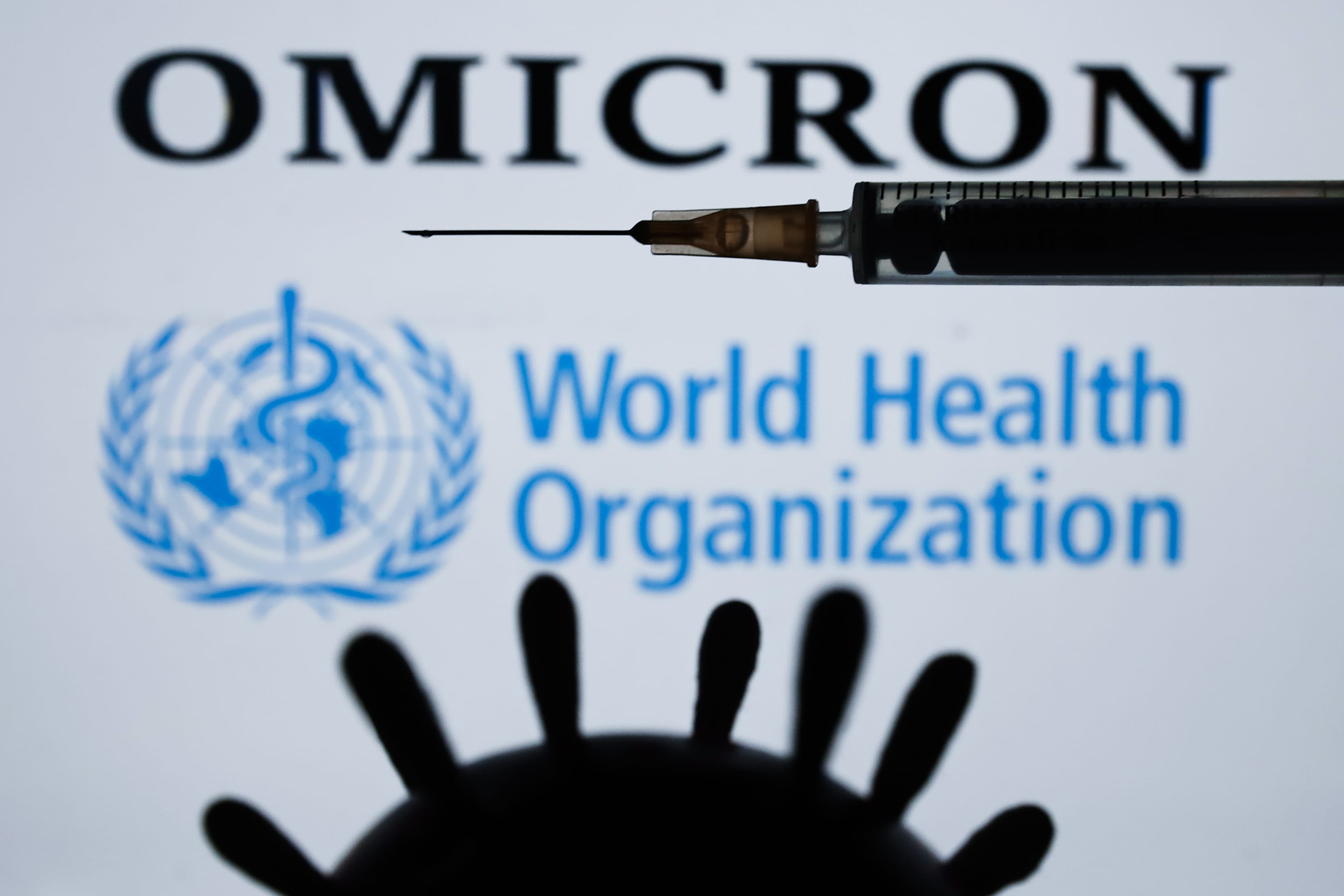UPDATE: U.S. health officials on Monday cut isolation restrictions for Americans who catch the coronavirus from 10 to five days and similarly shortened the time that close contacts need to quarantine. Read more here.
_________________________________________________________________________
With COVID cases continuing to rise after many gathered for the holidays over the weekend, what should you do if you or someone you were with tests positive for coronavirus?
As families and friends gather to celebrate Christmas, New Years and other holidays, many are looking for information on how long to quarantine, how long they might be contagious, when is the best time to get tested after exposure and more.
Here's a look at the guidance from the Centers for Disease Control and Prevention on what to do if you test positive or believe you were exposed to someone who has.
How Soon Might Symptoms Appear?
According to the CDC, COVID symptoms can appear anywhere from two to 14 days after someone is exposed to the virus.
Anyone with symptoms should get tested for COVID.
When Should You Get a COVID Test?
Those who have been fully vaccinated and around someone who has COVID-19 are recommended to get tested between five and seven days after their exposure, according to the most recent guidance from the CDC, though previous guidance had been between three and five days.
Feeling out of the loop? We'll catch you up on the Chicago news you need to know. Sign up for the weekly Chicago Catch-Up newsletter.
Those who develop symptoms should get tested as symptoms develop, but if a test is negative and symptoms persist another test might be needed a few days later, particularly for those who use at-home test kits.
"So if someone is having symptoms and they get a negative test, one, it depends on the severity right? If you're having severe symptoms we don't want you to just do a home test either," said Dr. Nimmi Rajagopal, the associate chair of the Department of Family and Community Medicine for Cook County Health. "We want you to call your doctor's office and make sure that they have an opinion here because there are of course other things like the flu that are out there that can mimic symptoms or have similar symptoms. But if you're having symptoms and they're kind of mild and lingering and you use the [at-home] test and it's negative, we want you to take the precautions and then retest in three to five days. And that's why most of these kits actually come with two tests."
When is Someone With COVID Contagious?
A person with COVID-19 is considered infectious starting two days before they develop symptoms, or two days before the date of their positive test if they do not have symptoms.
How Long Should you Quarantine or Isolate?
First things first, those who believe they have been in contact with someone who has COVID and are unvaccinated should quarantine. Those who test positive, regardless of vaccination status, must isolate, according to the Centers for Disease Control and Prevention.
Here's the breakdown:
Quarantine
Those who have been within 6 feet of someone with COVID for a cumulative total of at least 15 minutes over a 24-hour period should stay home for 14 days after their last contact with that person and watch for symptoms. If possible, those quarantining should also stay away from the people they live with, particularly those who are at an increased risk of developing more severe COVID illness.
If symptoms appear within the quarantine window, isolate immediately and contact a healthcare provider, the CDC's guidance states.
Those who are fully vaccinated do not need to quarantine, according to the CDC, but they should get tested anywhere from five to seven days following their exposure regardless of symptoms.
Local health authorities can also make the final determination about how long a quarantine should last, however. And testing can play a role.
For example, in Chicago, those who travel to or from certain parts of the country and are unvaccinated must quarantine upon arrival to Chicago, but the length of time they should do so for depends on whether they get tested for COVID.
The city's travel advisory recommends those who travel from the designated warning states must:
- Get tested with a viral test 3-5 days after travel AND stay home and self-quarantine for a full 7 days.
- Even if you test negative, stay home and self-quarantine for the full 7 days.
- If your test is positive, isolate yourself to protect others from getting infected.
- If you don’t get tested, stay home and self-quarantine for 10 days after travel.
Illinois' health department states that:
- Quarantine can end after Day 10 without testing and if no symptoms have been reported during any day of the daily monitoring period.
- Quarantine can end after Day 7 if a RT (Reverse Transcriptase)-PCR test is negative and if no symptoms were reported during any day of the daily monitoring period. The earliest a specimen may be collected and tested would be on Day 6 with quarantine being discontinued no earlier than Day 8. This option is not recommended for children in daycares or K-12 schools, however.
"Due to the risk of severe illness and congregate transmission, IDPH recommends the full 14-day quarantine period rather than the shortened options described above in congregate living settings with vulnerable populations, such as skilled care and correctional facilities," the Illinois Department of Public Health states on its website.
For schools, the guidance is different. In these settings, IDPH guidance states that:
- Any student or school personnel who is a confirmed case or probable case should stay home for a minimum of 10 days following onset date if symptomatic or date of positive test if asymptomatic, or as otherwise directed by the school’s local health authority.
- Any unvaccinated student or school personnel who is a close contact must stay home for a minimum of 14 days or as otherwise directed by the school’s local health authority, which may recommend options such as exclusion for 10 days without testing but with daily symptom check or seven days with a negative test result on day 6. As an alternative to exclusion, schools may permit close contacts who are asymptomatic to be on the school premises, extracurricular events, or any other events organized by the school if both the confirmed case or probable case and the contact were masked for the entire exposure period and provided the contact tests negative on days 1, 3, 5 and 7 following the exposure. Individuals who are fully vaccinated or who tested positive for COVID-19 within prior 90 days and are currently asymptomatic are not considered close contacts.
- Any student or school personnel who exhibit symptoms of COVID-19, as defined by the CDC, should stay home until they test negative for COVID-19, or for a minimum of 10 days, until they are fever free for 24 hours and until 48 hours after diarrhea or vomiting have ceased.
Isolation
According to the CDC, people who are positive for COVID should stay home until it's safe for them to be around others, including even other members of their home.
Health officials recommend a "sick room" or area for those who are infected and a separate bathroom, if possible.
So how do you calculate your 10-day isolation period?
According to the CDC, "day 0 is your first day of symptoms." That means that Day 1 is the first full day after your symptoms developed.
For those who test positive for COVID but have no symptoms, day 0 is the day of the positive test. Those who develop symptoms after testing positive must start their calculations over, however, with day 0 then becoming the first day of symptoms.
When Should You Call a Doctor?
The CDC urges those who have or may have COVID-19 to watch for emergency warning signs and seek medical care immediately if they experience symptoms including:
- Trouble breathing
- Persistent pain or pressure in the chest
- New confusion
- Inability to wake or stay awake
- Pale, gray, or blue-colored skin, lips, or nail beds, depending on skin tone
"This list is not all possible symptoms," the CDC states. "Please call your medical provider for any other symptoms that are severe or concerning to you."
You can also notify the operator that you believe you or someone you are caring for has COVID.
What If You Test Positive Using an At-Home Test?
Those who test positive using an at-home test are asked to follow the latest CDC guidelines and communicate the results to their healthcare provider, who is responsible for reporting test results to the state health department.
Chicago Department of Public Health Commissioner Dr. Allison Arwady has said that that process is not likely happening for every test, however.
"All of those negatives realistically are not being reported," Arwady said. "We're not counting, you know, it's a fiction that we've ever counted every COVID test."
She added that though many home tests are not being reported, positive results likely are provided to health care providers, then to the health departments.
When Can You Be Around Other People After Having COVID?
If you had symptoms, the CDC says you can be around others if you meet the following criteria:
- 10 days since symptoms first appeared and
- 24 hours with no fever without the use of fever-reducing medications and
- Other symptoms of COVID-19 are improving (note that loss of taste and smell may persist for weeks or months after recovery and do not count among these symptoms)
The CDC says these recommendations don't apply to those who have severe COVID or weakened immune systems, however.
If you tested positive but had no symptoms for the duration of your isolation, the CDC says:
- You can be with others after 10 days have passed since you had a positive viral test for COVID-19 (based on the date you were tested)
For those with severe illnesses or weakened immune systems, the CDC says staying home up to 20 days after symptoms first appeared is advised, but people in this group should talk to their healthcare provider before making decisions.
"People with weakened immune systems may require testing to determine when they can be around others," the CDC's website states. "Talk to your healthcare provider for more information."



